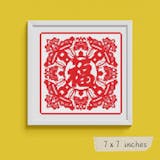Paul Cezanne (10)
Paul Cézanne, the man often dubbed the “father of modern art,” was anything but conventional. Born in 1839 in Aix-en-Provence, France, Cézanne spent his life looking at the world in ways that made even the most familiar scenes seem strange, abstract, and profoundly new. You could say he had an obsession with seeing things differently—and the way he approached painting was as revolutionary as it was meticulous.
At first glance, Cézanne’s paintings might look deceptively simple: fruit on a table, a mountain in the distance, or a group of bathers. But behind each brushstroke was a deep exploration of form, structure, and perspective. In fact, Cézanne was determined to take the foundations of traditional painting and give them a seismic shake-up. He didn’t just paint what he saw; he painted the underlying geometry of the scene, breaking everything down into basic shapes like cubes, spheres, and cones. This method of "structural" painting laid the groundwork for Cubism, the movement famously led by Pablo Picasso and Georges Braque.
One of his most well-known subjects was still life. But rather than just showing a bowl of fruit as it appeared, Cézanne’s apples, oranges, and pears seem almost alive, as if they were glowing or shifting in space.
Perhaps one of the most revolutionary aspects of Cézanne’s work was his refusal to follow the strict rules of perspective and anatomy. His figures might appear a bit off-kilter or distorted, but that was intentional. He was interested in conveying the "feel" of the scene, not an exact replica of what the eye saw.
Despite his later fame, Cézanne’s career was not an easy one. He spent much of his life struggling for recognition, often rejected by the art establishment, and faced criticism from his contemporaries. But Cézanne didn’t care for easy praise—he cared about his vision, and he stuck to it no matter how much it upset the art world. His unwavering commitment to his craft earned him respect, and posthumously, he became one of the most influential artists of the 20th century.
















